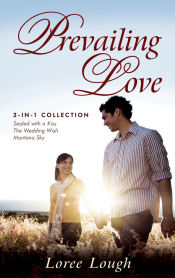At last count, best-selling author Loree Lough had 74 books, 63 short stories, and over 2,500 articles in print. Dubbed “the writer whose stories touch hearts and change lives”, she has earned dozens of “Readers’ Choice” and industry awards. Her most recent release, Be Still…and Let Your Nail Polish Dry! will soon be joined by Prevailing Love, Tales of the Heart, and Beautiful Bandit (#1 in her “Lone Star Legends” series from Whitaker), and One Forsaken Man (#1 in her “First Responders” series from Abingdon). Loree and her husband split their time between a little house in the Baltimore suburbs and a really little cabin in the Allegheny Mountains, where they cater to a formerly-abused Pointer whose numerous vet visits inspired the nickname ‘Cash’. She loves to hear from her readers, so feel free to write her at loree [at] loreelough [dot]com. Visit her blog (www.theloughdown.blogspot.com) and web site (http://www.loreelough.com). |
Interview With Margie Summers, Web Developer |
|
Q: What sort of training is required to be a Web developer? Depends on what you want to focus on. You can learn everything you need to know about Web development on the Web itself, and you can find most of it for free. From there it’s just a matter of “practice making perfect” and always trying to add new technologies to your toolbox. I learned HTML and some other basics by following online tutorials and then by reverse-engineering sites to see how they were built. Once I knew HTML, I drifted into CSS, Javascript, Flash, and what have you. Learning the design end of things is a bit different . . . that goes more on instinct. You develop an eye over time, but it helps to stay current on what Web “fashions” are at any given moment. It helps to learn the grassroots methods of development, though. I don’t use templates or WYSIWYG design tools like Dreamweaver. I like to code in NotePad because it gives me more control over whatever I’m trying to execute. Q: What are the top five do advice points for anyone thinking about setting up a Web site? 1. To save yourself time, money,
and grief, cut to the chase and hire a professional. Q: And what are the top five don’t points for working with a Web developer? 1. I think the worst mistake
companies can make is failure to communicate with their Web developers.
This almost always guarantees they will get less than they could have
for their investment. The more a client is involved, giving feedback
and submitting content, the better the outcome will be. Q: What are the biggest mistakes made by people who set up their own Web sites? |
Just one: Setting up their own Web sites. Do-it-yourself can be a viable option for someone on a tight budget. But in general, the biggest mistake of do-it-yourselfers is poor organization: “blind alleys” without links to the rest of the pages on the site, for example. Another one is cramming too much information on a page so that the poor user has to scroll vertically to China, sometimes down a long, unbroken wall of text. Or worse, has to scroll horizontally. One flagrant error that DIYers often make is to specify any font that’s installed on their computer, so of course it shows up beautifully on their own PCs. What they don’t realize is that the rest of the world is seeing their carefully selected Haandskrift Medium Oblique as Times or Arial—the Web defaults—because the rest of the world doesn’t happen to have Haandskrift installed. Which leads me to another issue: Most DIYers fail to test their sites on anything but their own systems when, in fact, they need to check it on other monitors, browsers, screen resolutions, and operating systems. (I don’t like sites done entirely in Flash for that reason: Some part of them is usually inaccessible on some systems.) Q: How often should clients update their sites? At the very least, sites need to be freshened up every six months. For sites used as a business’s primary marketing tool, once a month is good; once a week is better. Q: What’s the best way to ensure our sites are viewed by the largest possible audience? Search engine optimization, Facebook, Twitter, blogging, e-newsletters . . . I recommend using pretty much every tool out there to spread the word. Of course, make sure your Web address is included on every print piece you have, and spread it around at every conceivable opportunity. Q: How can people find you on the Web? My business site is www.sumsites.com. I’m also on Facebook as SumSites and as Margie Summers. And I can always be reached by e-mail: MSum865048@aol.com.   |








 This month, because Loree is
working to meet three book deadlines between now and June, she’s doing
something a little different (and gentler on her schedule) for your
reading enjoyment: interviewing her Web designer, Margie Summers.
This month, because Loree is
working to meet three book deadlines between now and June, she’s doing
something a little different (and gentler on her schedule) for your
reading enjoyment: interviewing her Web designer, Margie Summers.